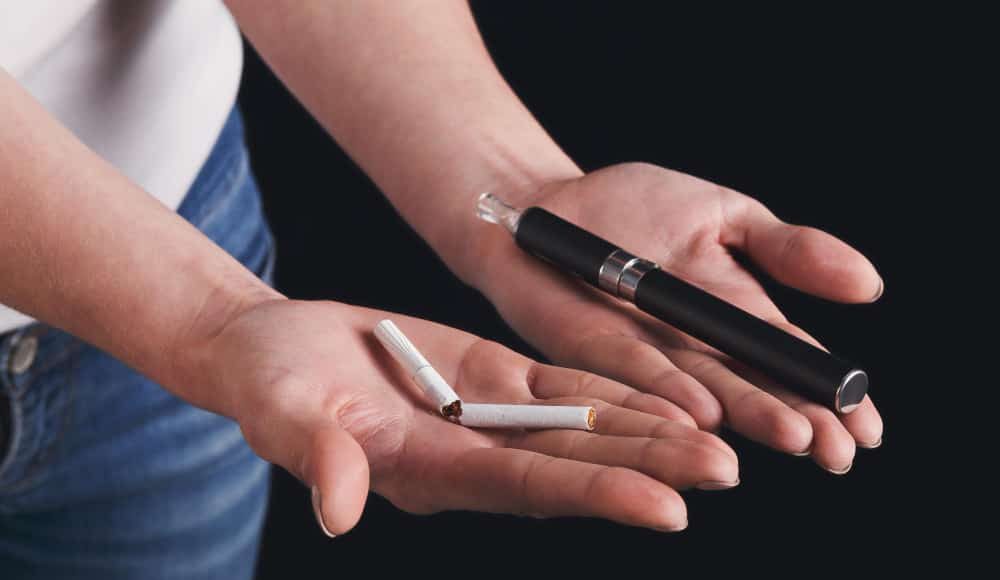In fact, a 2022 study published in BMC Public Health examining data from the US PATH Surveys from 2014-2019, found that ‘risk misperceptions’ about vaping are still on the rise. Despite all the scientific evidence indicating the relative safety of the products, in 2019, 83% of smokers in the U.S. believed that vaping was as harmful, if not more harmful, than smoking.
Unsurprisingly the smokers who had these inaccurate beliefs about vapes were less likely to try and/or switch to the products, and to keep on smoking. While smokers who had the correct facts about the devices, were 134% more likely to try vaping, 127% more likely to stop smoking, less likely to dual use vapes and cigarettes and less likely to relapse to smoking.
In a media release about a commentary he recently co-wrote with the director of the Center for Tobacco Products (CTP) at the U.S. Food and Drug Administration (FDA) Brian King, MUSC Hollings Cancer Center’s Benjamin Toll, Ph.D., director of the MUSC Health Tobacco Treatment Program and co-director of the Lung Cancer Screening Program, said that he finds it tragic when he comes across misinformation among physicians. “It breaks my heart that I’ve met with a lot of well-intentioned physicians who say to me, ‘Vaping is worse than smoking.’ And I say, ‘No, that’s not true,’” he said.
Preventing use by minors should not remove cessation opportunities for adults
Published in the scientific journal Addiction, the commentary asks public health professionals to keep in mind the importance of educating adult smokers about the relative risks of different nicotine products. Whilst at the same time, they should strive to prevent use by minors. However, it highlights, the latter should not come in the way of the former.
The article also underlines that the first line approach for smoking cessation should involve FDA approved NRTs, and adds that to data no vape is approved for smoking cessation. Tobacco harm reduction (THR) experts would argue that statements like these may be detrimental to any current smokers considering vapes as a cessation aids, as several studies have indicated that the devices are more effective than traditional NRTs.
The commentary goes on to conclude that ultimately, if any smokers choose to quit via vapes, they should choose from the 23 tobacco-flavored e-cigarette products and devices which have been authorized by the FDA’s PMTA process. This process has of course been heavily criticised for being very lengthy, expensive and biased. To this effect, many THR experts would argue that a PMTA authorization does not necessarily hold much weight in terms of product standards.
The problem with dual use
The commentary authors also highlight the importance of not getting stuck in a pattern of dual use of vapes and cigarettes, in order to completely eliminate the risks from smoking. In line with this, a 2022 study published in the journal Tobacco Control, had concluded that dual users of vapes and cigarettes are more likely to continue smoking rather than quit.
Titled, “Trajectories of ENDS and cigarette use among dual users: analysis of waves 1 to 5 of the PATH Study,” the study analysed data extracted from the Population Assessment of Tobacco and Health (PATH) Study on 545 smokers who also vaped. “Most dual users maintained long-term cigarette smoking or dual use,” concluded the research team.
CTP review Finds Multiple Issues
In other news, last February Dr. Matthew Farrelly was selected as the next Director of CTP’s Office of Science. Dr. Farrelly came to the CTP from RTI International, where he served as Chief Scientist and Director of the Center for Health Analytics, Media, and Policy. At the time the FDA said Farrelly has extensive work experience in the field of tobacco and nicotine science, and is internationally known for his leadership and organizational management skills.
Meanwhile, as a result of the constant and relentless criticism received by the CTP over the way it has handled the ongoing PMTA process for vaping products, last year FDA head Robert Califf, announced he was commissioning external experts to conduct “a comprehensive evaluation” of the center.
A resulting report released last December revealed that the auditors found a lack of clarity and transparency and also internal communication issues. Moreover the CTP was found to not be sufficiently equipped to face the workload that came with the PMTA process and other regulatory oversights they have been tasked with. This has led to well documented shortcuts and the resulting criticism of the center.













